The Coptic version of the Asceticon of Abba Isaiah became known due to Antoine Guillaumont edition of several fragmentary Sahidic witnesses.[1] A few years before this edition appeared, Guillaumont published in Mélanges Crum a list of the available Coptic manuscripts of the Asceticon.[2]
I would like to discuss briefly here only one of these manuscript witnesses, which belonged once to the library of the White Monastery. Apparently, this codex is one of the two White Monastery manuscripts which contained exclusively the logoi of Avva Isaiah. As the fragmenta inedita outnumber the edited parts, my purpose is to trace a preliminary directory of the codex for a future edition. In the Corpus dei Manoscritti Copti Letterari database, the codex discussed here is designated by the sigla MONB.BQ. The references to the Asceticon are given according to the Syriac version published by René Draguet in Corpus Scriptorum Christianorum Orientalium series.
First of all, we have six supplementary leaves, known for a long time, in the collection of the French Institute in Cairo (nos. 52-57), whose publication was envisaged, but unfortunately never accomplished, by Antoine Guillaumont and René-Georges Coquin.[3]
 They are paginated consecutively from 193 to 204 and can be ascribed to Logos 28 (= Syriac Logos 22). To the same Logos belong three other leaves, previously unidentified, one in the Stadtbibliothek in Berlin, MS 1613, f. 8 (p. 205-206), and two others in the papyrus collection of the National Library in Vienna, K 9766-9765 (p. 207-208, 221-222).
They are paginated consecutively from 193 to 204 and can be ascribed to Logos 28 (= Syriac Logos 22). To the same Logos belong three other leaves, previously unidentified, one in the Stadtbibliothek in Berlin, MS 1613, f. 8 (p. 205-206), and two others in the papyrus collection of the National Library in Vienna, K 9766-9765 (p. 207-208, 221-222).
From Vienna we must move now to Naples, where Paola Buzi signaled recently a fragment which has not been recognized before. Thus, IB.17, f. 6 was rightly identified by my colleague as belonging to Logos 25 (= Syriac Logos 7).[4] Furthermore, two other fragments in the same location (IB.14, ff. 29-30),[5] which were wrongly attributed in the past to the Rules of Horsiesius or to Shenoute,[6] can be identified as parts of the same codex (= Logoi 21 [“On the Repentance”], 20 [“On the Humility”], 7 [“On the Virtues”]).[7]
More than 1,000 km away, in Paris, the National Library of France preserves several fragments which do not appear in Guillaumont’s directory. Here they are:
BnF 1315, f. 45 (p. 171-172) belongs to Logos 22 (= Syriac Logos 20)
BnF 1315, f. 64 belongs to Logos 25 (= Syriac 7)
BnF 1317, f. 47 belongs to Logos 16 (= Syriac 15)
BnF 1315, f. 146v-r belongs to Logos 21 (= Syriac 14)[8]
 Finally, from Guillaumont’s list of this codex should be removed the fragment Vienna K 9646,[9] which contains indeed an excerpt from Isaiah of Scetis but was copied in a different hand and belongs to a Patristic florilegium, not to our manuscript. A second Isaiah fragment of the same florilegium, identified by Enzo Lucchesi, is Paris 1314, f. 144 (p. [189]-[190]) (= Greek Logos 12).[10]
Finally, from Guillaumont’s list of this codex should be removed the fragment Vienna K 9646,[9] which contains indeed an excerpt from Isaiah of Scetis but was copied in a different hand and belongs to a Patristic florilegium, not to our manuscript. A second Isaiah fragment of the same florilegium, identified by Enzo Lucchesi, is Paris 1314, f. 144 (p. [189]-[190]) (= Greek Logos 12).[10]
The newly identified fragments allow us to formulate a reasonable hypothesis concerning the order of the logoi in this codex:
Logos 25 London BL Or. 3581A, ff. 148-151 (p. 5-12) = Guillaumont, p. 1-5
Paris BnF 1315, f. 64 (p. xxx-xxx) = unpublished
Leiden Rijksmuseum 118 (p. xxx-xxx) = Guillaumont, p. 15-16
Naples IB.17, f. 6 (p. xxx-xxx) = unpublished
Logos 4 Naples IB.09, f. 58 (p. 57-58) = Guillaumont, p. 5-6
Logos 16 Paris BnF 1317, f. 47 (p. xxx-xxx) = unpublished
Logos 3 Naples IB.09, f. 59 (p. 117-118) = Guillaumont, p. 6-7
Logoi 3/15 Paris BnF 12913, f. 53 (p. 123-124) = Guillaumont, p. 7-8
Logos 21 Naples IB.09, f. 57 (p. 131-132) = Guillaumont, p. 8-9
Naples IB.14, f. 29 (p. 135-136) = unpublished
Paris BnF 1315, f. 146 (p. xxx-xxx) = unpublished
London BL Or. 3581A, f. 152 (p. xxx-xxx) = Guillaumont, p. 12-13
Logoi 21/20/7 Naples IB.14, f. 30 (p. [151]-[152]) = unpublished
Leiden Rijksmuseum 111 (p. 157-158) = Guillaumont, p. 10-11
Logos 22 Paris BnF 1315, f. 45 (p. 171-172) = unpublished
Logoi 23/28 Paris BnF 1315, f. 48 (p. [191]-[192]) = Guillaumont, p. 13-15
Cairo IFAO nos. 52-57 (p. 193-204) = unpublished
Berlin Stadtbibliothek 1613, f. 8 (p. 205-206) = unpublished
Vienna K 9766 (p. 207-208) = unpublished
Vienna K 9765 (p. 221-222) = unpublished
Logoi 28/?[11] Paris BnF 12913, f. 36 (p. xxx-xxx) = Guillaumont, p. 16-17
[1] A. Guillaumont, L’Asceticon copte de l’abbé Isaïe. Fragments sahidiques édités et traduits (Bibliothèque d’études coptes, 5; Cairo 1956) part 1; part 2.
[2] A. Guillaumont, “La recension copte de l’Ascéticon de l’Abbé Isaïe,” in Coptic Studies in Honor of Walter Ewing Crum (Boston: Byzantine Institute, 1950) 49-60.
[3] See R.-G. Coquin, “Le fonds copte de l’Institut français d’archéologie orientale du Caire,” in Écritures et traditions dans la literature copte. Journée d’études coptes, Strasbourg 28 mai 1982 (Cahiers de la bibliothèque copte, 1; Louvain 1983) 14.
[4] For the Syriac text see R. Draguet, Les cinq recensions de l’Ascéticon syriaque d’abba Isaïe, I. Les témoins et leurs parallèles non-syriaques. Édition des logoi I-XIII (CSCO, 289. Scriptores syri, 120; Louvain 1968) 90-91. The translation is available in Idem, Les cinq recensions de l’Ascéticon syriaque d’abba Isaïe, I. Introduction au problème isaïen. Version des logoi I-XIII avec des parallèles grecs et latins (CSCO, 293. Scriptores syri, 122; Louvain 1968) 107-108.
[5] P. Buzi, Catalogo dei manoscritti copti borgiani conservati presso la Biblioteca Nazionale “Vittorio Emanuele III” di Napoli (Accademia dei Lincei – Memorie, Ser. IX, 25/1; Rome 2009) 287-288.
[6] Attributed to Shenoute in A. Shisha-Halevy, Coptic Grammatical Categories (Analecta Orientalia, 53; Rome 1986) 218.
[7] The headings which appear in the manuscript indicate the title of Logoi. In discussing Shisha-Halevy’s attribution to Shenoute, S. Emmel, Shenoute’s Literary Corpus 2 vols. (CSCO, 599 & 600. Subsidia, 111 & 112; Louvain 2004) 901 is cautious, remarking that “[t]he headings on f. 30 would be extraordinary in a codex of Shenoute’s works.”
[8] On the verso (the true recto) of BN 1315, f. 146 survives enough from James 2:17 to identify the parallel in Draguet, Logoi XIV-XXVI, 1: 215, 2: 266, whereas the recto (the true verso) has the text of Ephesians 5:6 and finds a parallel in Draguet, Logoi XIV-XXVI, 1: 216, 2: 266.
[9] Editio princeps in C. Wessely, Griechische und koptische Texte theologischen Inhalts V (Studien zur Palaeographie und Papyruskunde, 18; Leipzig 1917) 91-93 (= no. 279); reedited with French translation in Guillaumont, L’Asceticon copte, 11-12, 60-62.
[10] Syriac Logos 18; parallel in Draguet, Logoi XIV-XXVI, 1: 285-286, 2: 355-356. Identified by E. Lucchesi, “Chénouté a-t-il écrit en grec?,” in Mélanges Antoine Guillaumont: Contributions à l’étude des christianismes orientaux (Cahiers d’Orientalisme, 20; Geneva 1988) 207 n. 10.
[11] This second discourse, whose lemma can be read on the Paris fragment, apparently has not been yet identified in any other language than Coptic.









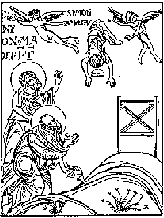




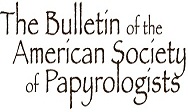
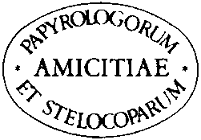
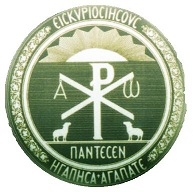





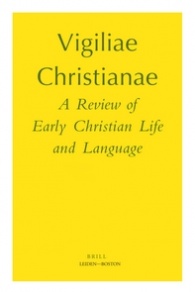






great work! Thanks!
Pingback: Once Again on the Asceticon of Abba Isaiah | Alin Suciu